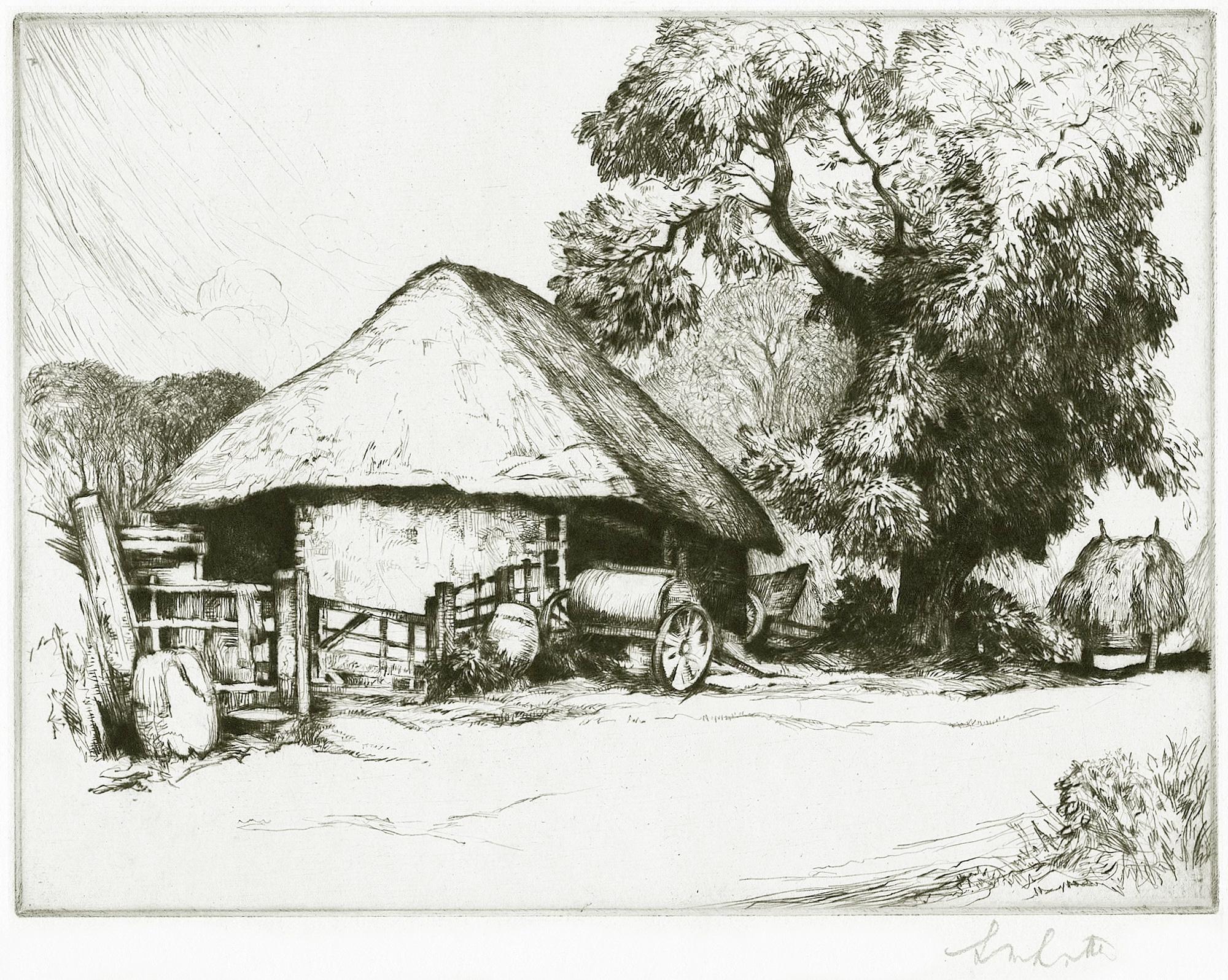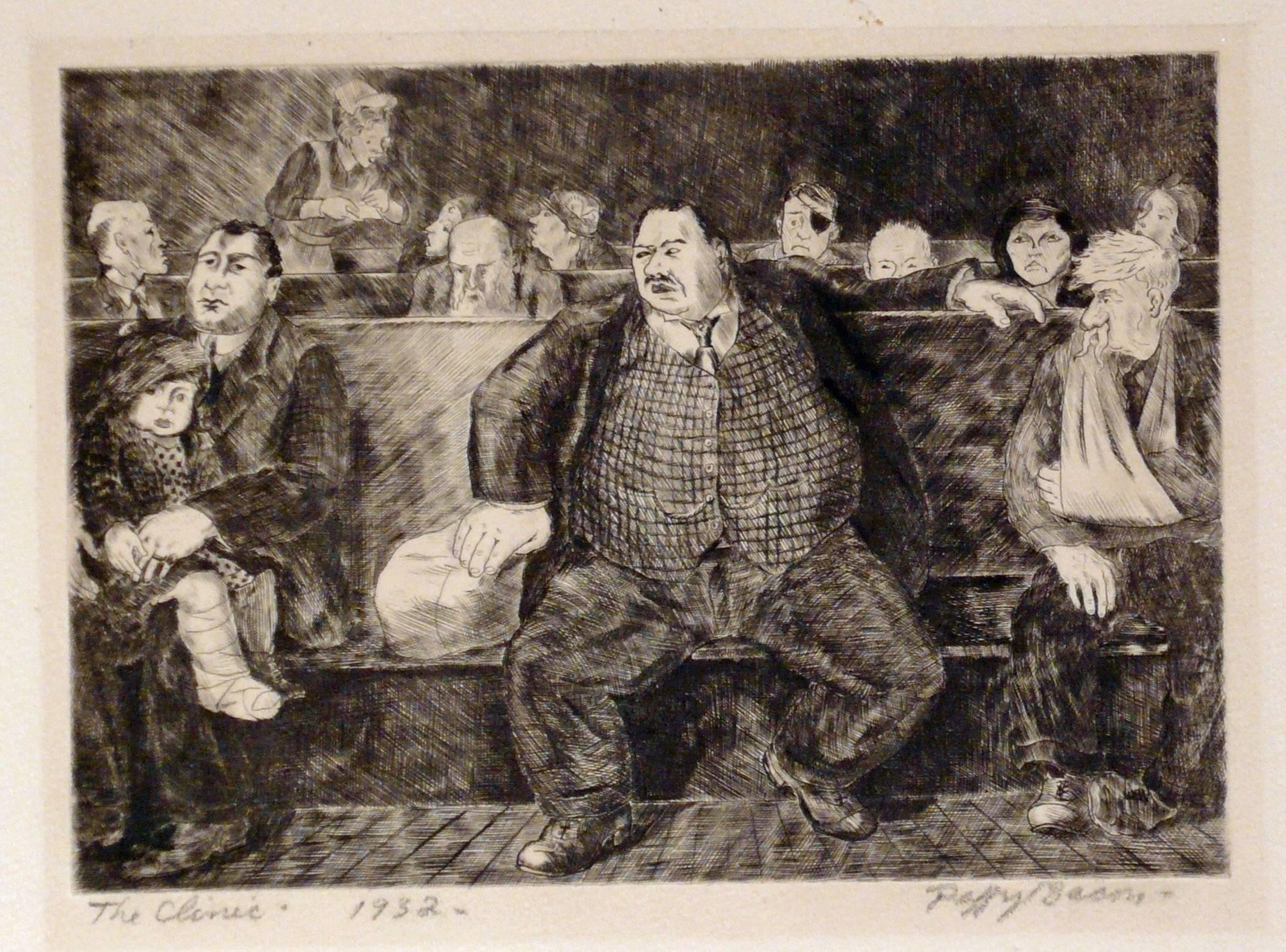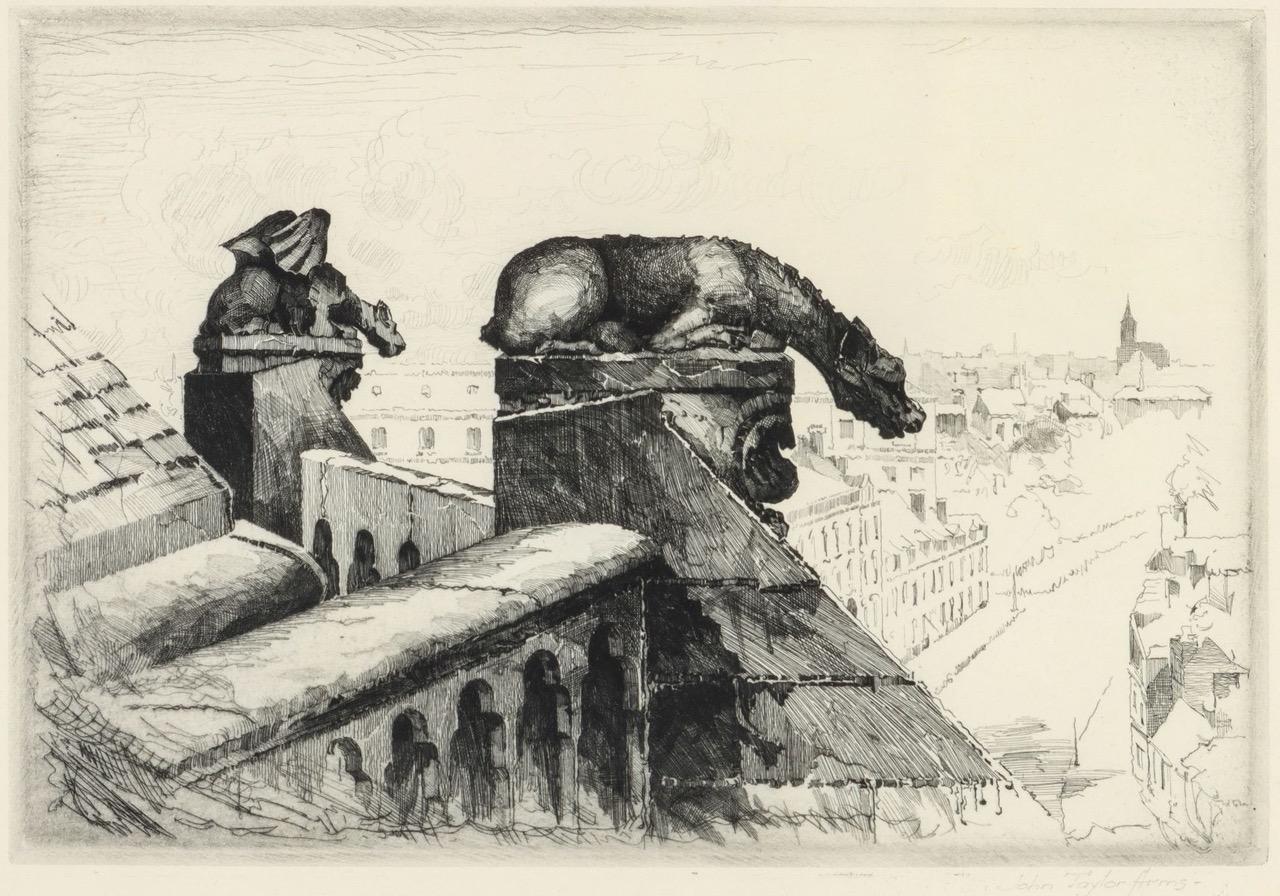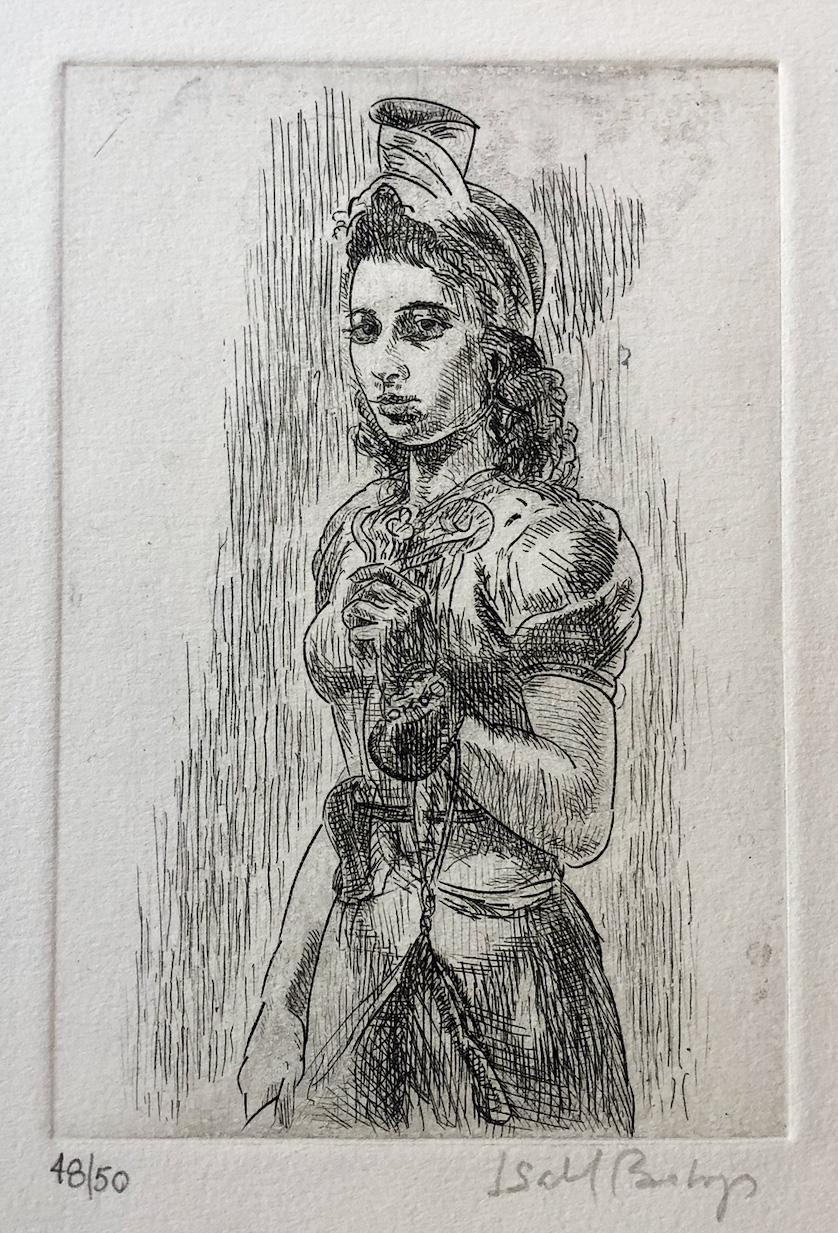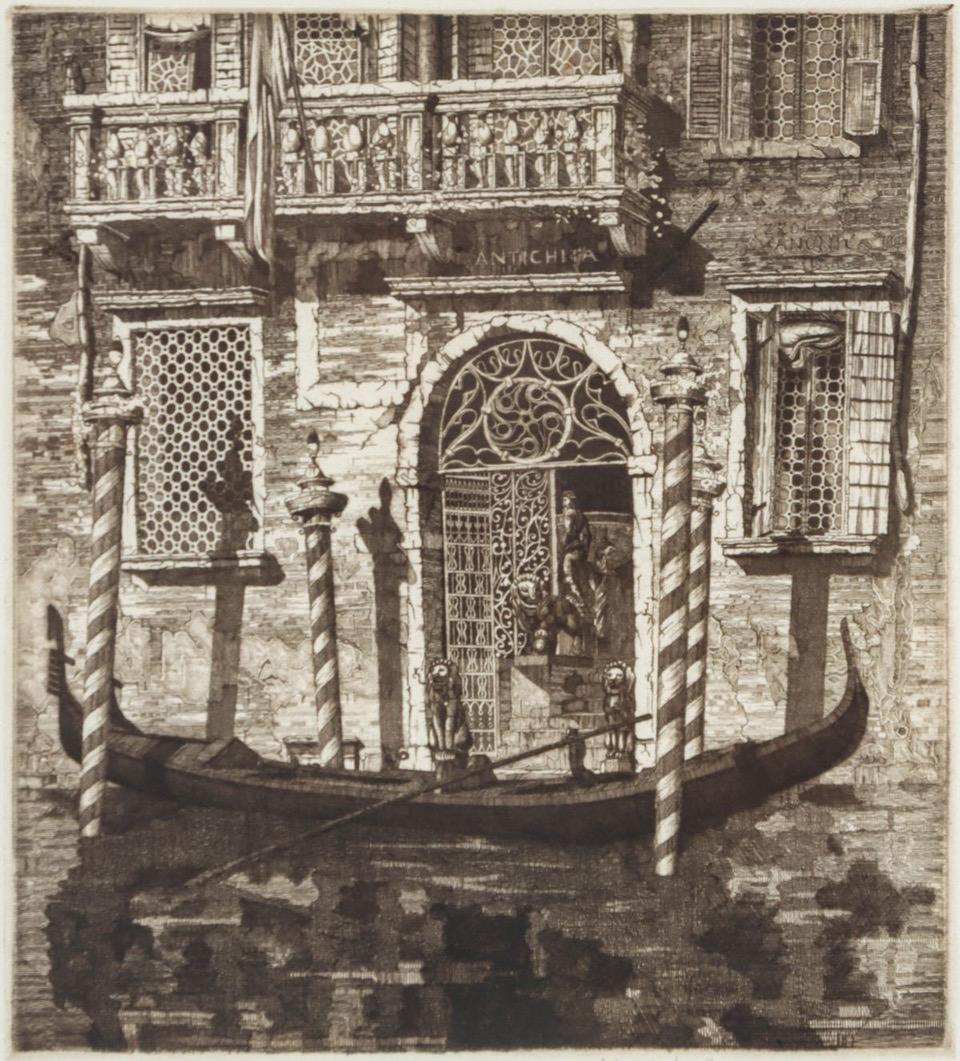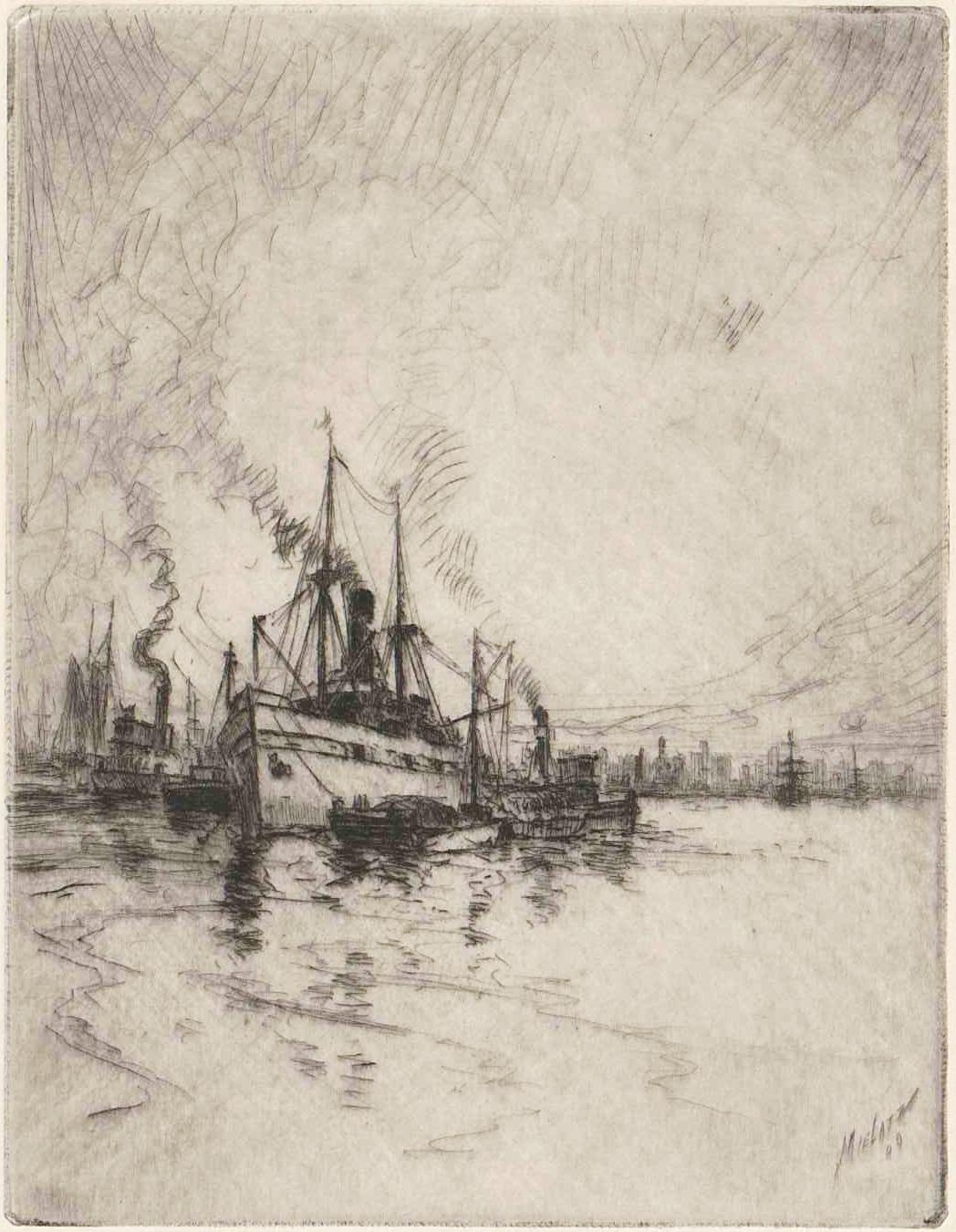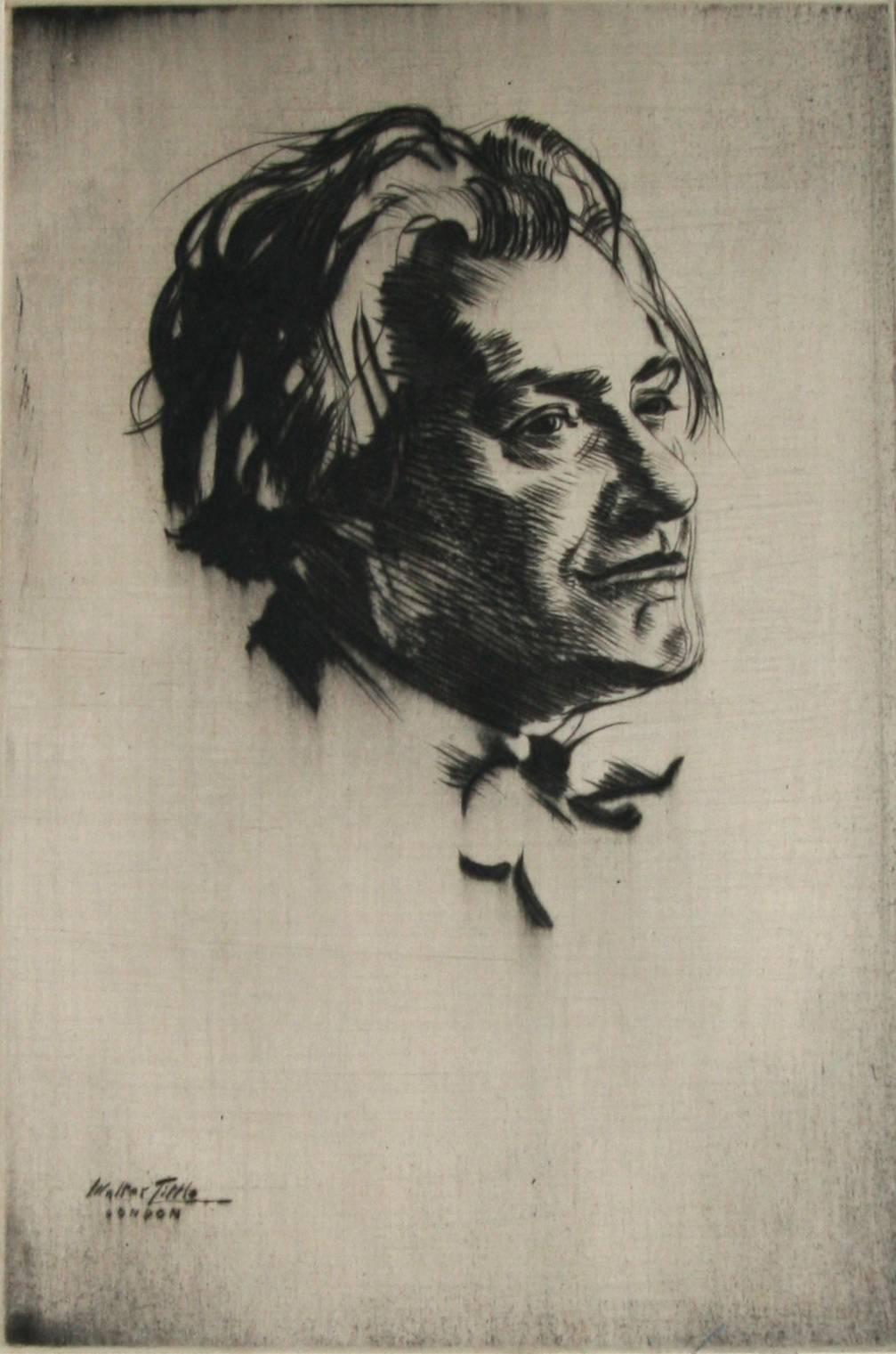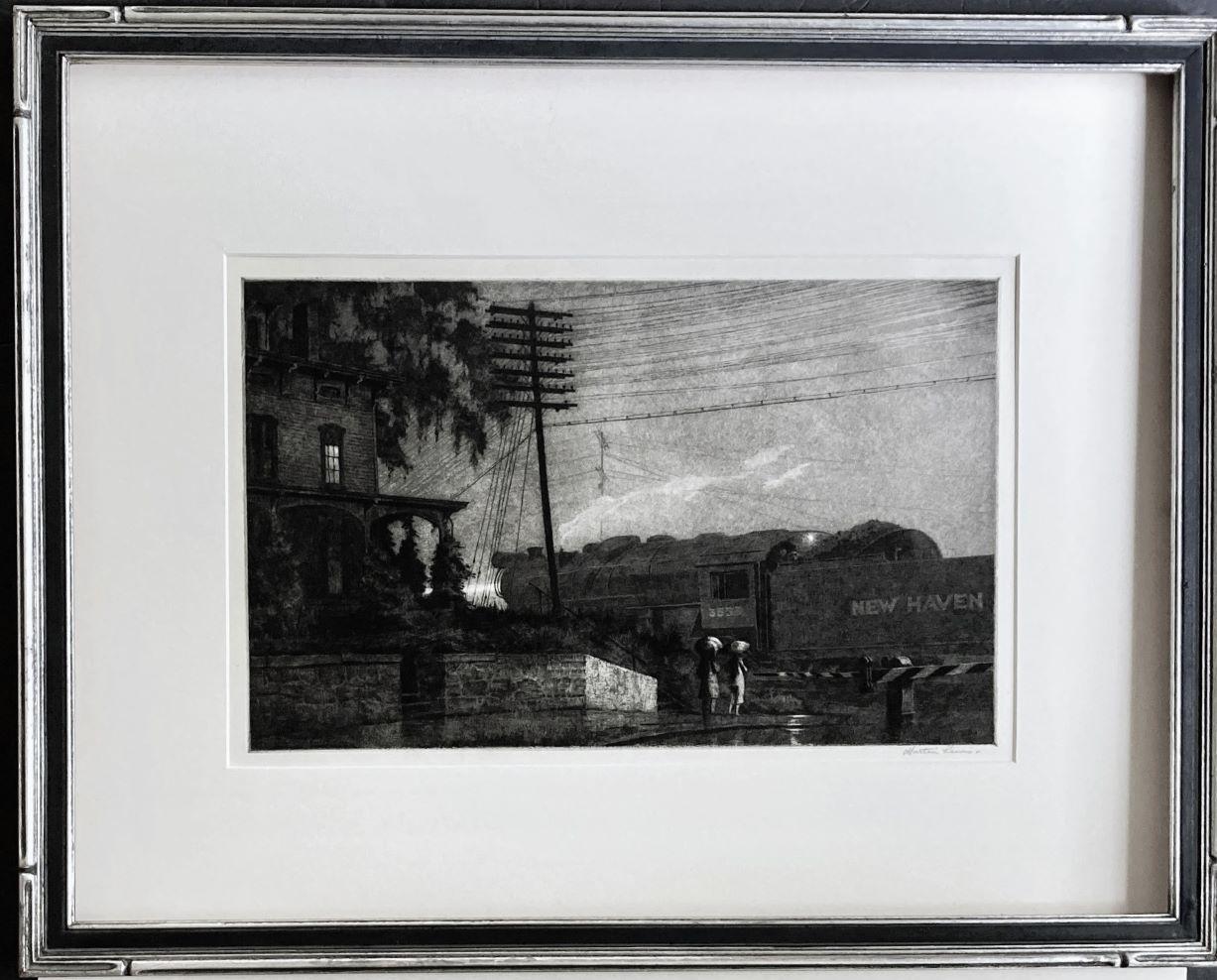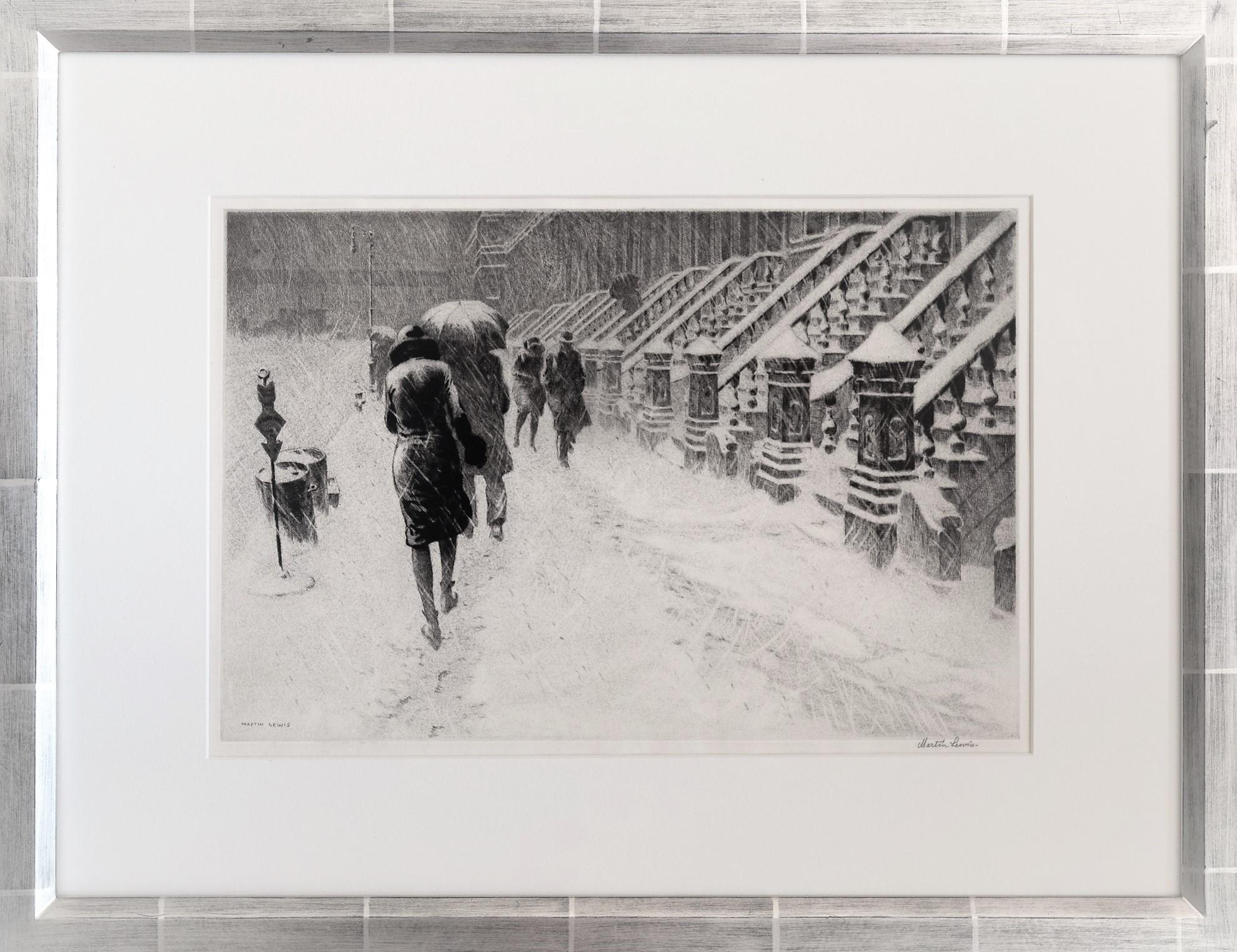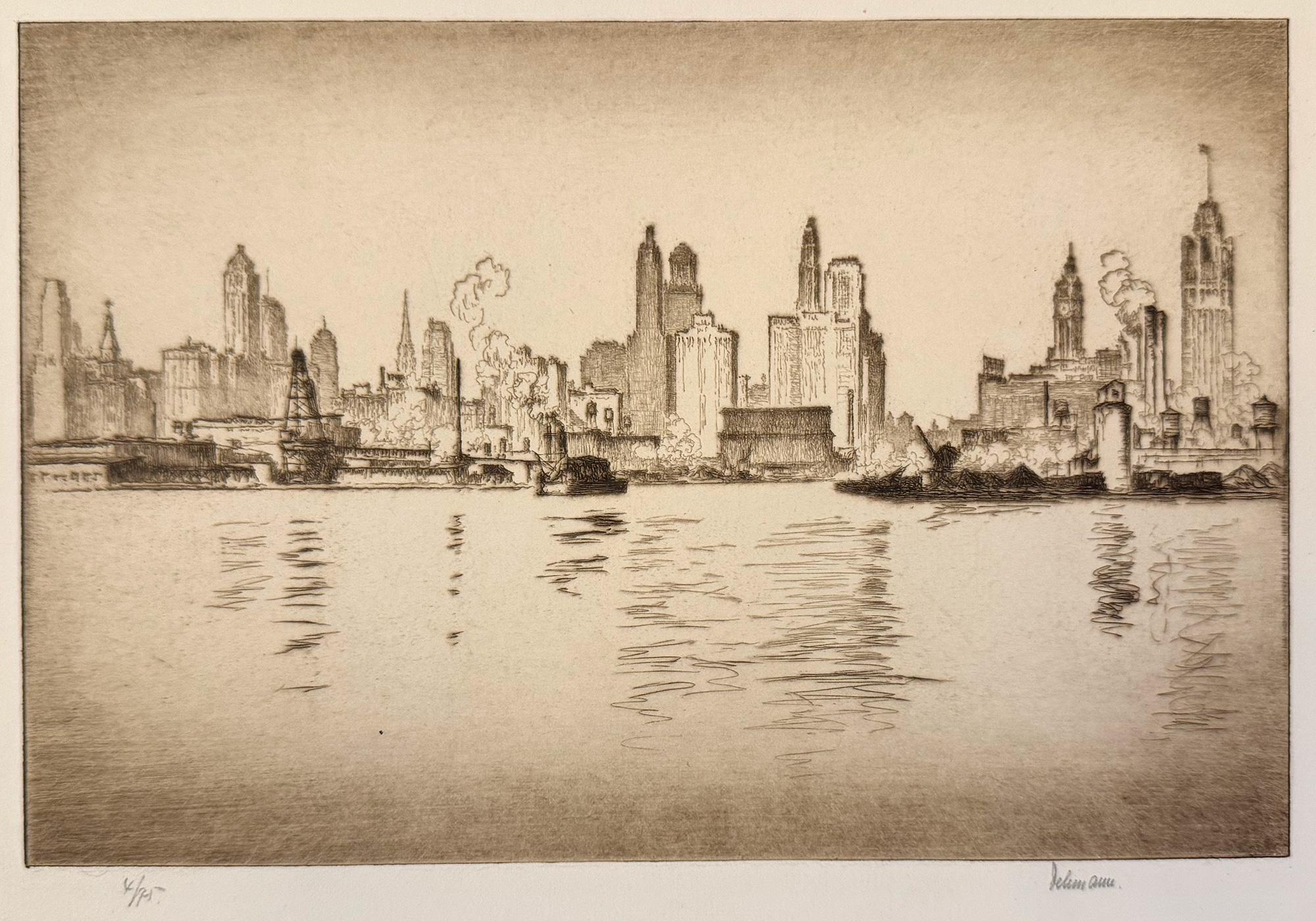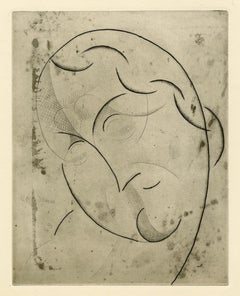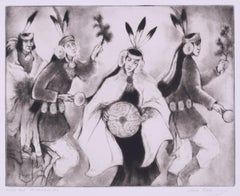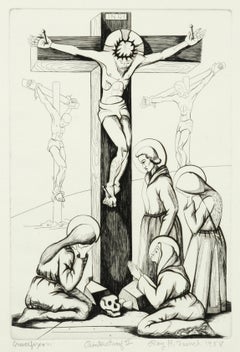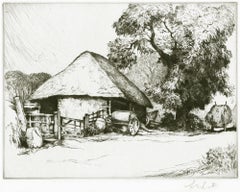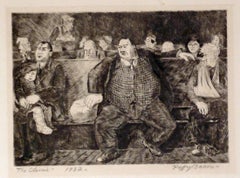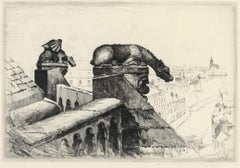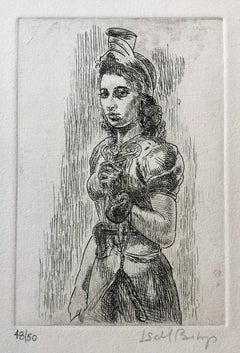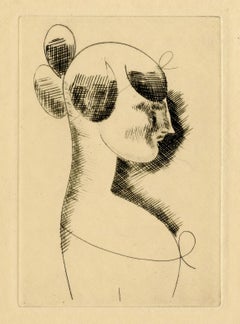
Profile Bust of a Girl - Woman's Head in Profile (Havard)
View Similar Items
Want more images or videos?
Request additional images or videos from the seller
1 of 6
Elie NadelmanProfile Bust of a Girl - Woman's Head in Profile (Havard)1920
1920
About the Item
- Creator:Elie Nadelman (1885-1946, Polish)
- Creation Year:1920
- Dimensions:Height: 4.63 in (11.77 cm)Width: 3.19 in (8.11 cm)
- Medium:
- Movement & Style:
- Period:
- Condition:
- Gallery Location:Fairlawn, OH
- Reference Number:Seller: FA94131stDibs: LU14011110742
About the Seller
5.0
Recognized Seller
These prestigious sellers are industry leaders and represent the highest echelon for item quality and design.
Platinum Seller
Premium sellers with a 4.7+ rating and 24-hour response times
Established in 1978
1stDibs seller since 2013
785 sales on 1stDibs
Associations
International Fine Print Dealers Association
Authenticity Guarantee
In the unlikely event there’s an issue with an item’s authenticity, contact us within 1 year for a full refund. DetailsMoney-Back Guarantee
If your item is not as described, is damaged in transit, or does not arrive, contact us within 7 days for a full refund. Details24-Hour Cancellation
You have a 24-hour grace period in which to reconsider your purchase, with no questions asked.Vetted Professional Sellers
Our world-class sellers must adhere to strict standards for service and quality, maintaining the integrity of our listings.Price-Match Guarantee
If you find that a seller listed the same item for a lower price elsewhere, we’ll match it.Trusted Global Delivery
Our best-in-class carrier network provides specialized shipping options worldwide, including custom delivery.More From This Seller
View AllGirl's Head - Woman's Head (Harvard)
By Elie Nadelman
Located in Fairlawn, OH
Girl's Head - Woman's Head (Harvard)
Drypoint, 1920
Unsigned (as issued)
From: The Drypoints of Elie Nadelman, 21 unpublished prints by the sculptor, proof from the original zinc an...
Category
1920s American Modern Figurative Prints
Materials
Drypoint
On Christmas Day
By Gene Kloss
Located in Fairlawn, OH
On Christmas Day
Drypoint and aquatint, 1979
Signed lower right: Gene Kloss (see photo)
Inscribed lower left:
"Artist's Proof", and titled "On Christmas Day"
An "artist's proof" impression, outside the edition of 25 examples signed and numbered
Reference: Sanchez 581
Condition: Excellent
Image/Plate size: 10 7/8 x 13 7/8 inches
Sheet size: 14 5/8 x 17 5/8 inches
Born Alice Glasier in Oakland, CA, Kloss grew up amid the worldly bustle of the San Francisco Bay Area. She attended the University of California at Berkeley, graduating with honors in art in 1924. She discovered her talents in intaglio printmaking during a senior-year course in figurative drawing. The professor, Perham Nahl, held up a print from Kloss’ first plate, still damp from the printing process, and announced that she was destined to become a printmaker.
In 1925, Gene married Phillips Kloss, a poet and composer who became her creative partner for life. The match was uncanny, for in her own way Gene, too, was a poet and a composer. Like poetry, her artworks capture a moment in time; like music, her compositions sing with aesthetic harmony. Although she was largely self-taught, Kloss was a printmaking virtuoso.
On their honeymoon the Klosses traveled east from California, camping along the way. They spent two week is Taos Canyon – with a portable printing press cemented to a rock near their campsite – where Gene learned to appreciate the wealth of artistic subject matter in New Mexico. The landscape, the cultures, and the immense sky left an indelible impression on the couple, who returned every summer until they made Taos their permanent home 20 years later.
Throughout her life, Kloss etched more than 625 copper plates, producing editions ranging from five to 250 prints. She pulled every print in every edition herself, manually cranking the wheel of her geared Sturges press until she finally purchased a motorized one when she was in her 70s. Believing that subject matter dictated technique, she employed etching, drypoint, aquatint, mezzotint, roulette, softground, and a variety of experimental approaches, often combining several techniques on the same plate. She also produced both oil and watercolor paintings.
Kloss’ artworks are filled with drama. Her prints employ striking contrasts of darkness and light, and her subjects are often illuminated by mysterious light sources. Though she was a devout realist, there is also a devout abstraction on Kloss’ work that adds an almost mythical quality.
For six decades Kloss documented the cultures of the region-from images of daily life to those of rarely seen ceremonies. She and her husband shared a profound respect for the land and people, which made them welcome among the Native American and Hispanic communities. Kloss never owned a camera but relied instead on observation and recollection. Her works provide an inside look at the cultures she depicted yet at the same time communicate the awe and freshness of an outsider’s perspective.
Although Kloss is best known for her images of Native American and Penitente scenes, she found artistic inspiration wherever she was. During the early years of their marriage, when she and Phil returned to the Bay Area each winter to care for their aging families, she created images of the California coast. And when the Klosses moved to southwestern Colorado in 1965, she etched the mining towns and mountainous landscapes around her.
In 1970 the Klosses returned to Taos and built a house north of town. Though her artwork continued to grow in popularity, she remained faithful to Taos’ Gallery A, where she insisted that owner Mary Sanchez keep the prices of her work reasonable regardless of its market value. Kloss continued to etch until 1985, when declining health made printmaking too difficult.
From her first exhibition at San Francisco’s exclusive Gump’s in 1937 to her 1972 election to full membership in the National Academy of Design, Kloss experienced a selective fame. She received numerous awards, and though she is not as well known as members of the Taos Society of Artists...
Category
1970s American Modern Figurative Prints
Materials
Drypoint
Profile Bust of a Girl - Woman's Head in Profile (Havard)
By Elie Nadelman
Located in Fairlawn, OH
Profile Bust of a Girl - Woman's Head in Profile (Havard)
Drypoint, 1920
Unsigned (as issued)
From: The Drypoints of Elie Nadelman, 21 unpublished prints by the sculptor, proof from ...
Category
1920s American Modern Figurative Prints
Materials
Drypoint
Crucifixion
By Ray H. French
Located in Fairlawn, OH
Crucifixion
Engraving, 1958
Signed, dated, titled, and annotated 'Printers Proof II' in pencil
A printed by Master Printer Jon Clemens, c. 2000
A brilliant impression full of burr
Im...
Category
1950s American Modern Figurative Prints
Materials
Engraving
Olympian Games
By Ray H. French
Located in Fairlawn, OH
Olympian Games
Engraving, 1957
Signed, dated, titled and numbered (see photos)
Edition: 25 (7/25)
From the first and only edition, probably less than 8 impressions printed
Printed by the artist
Condition: Excellent
soft fold in upper left margin
Image size: 15 7/8 x 19 7/8 inches
Sheet size: 18 1/2 x 22 3/8 inches
Provenance: Estate of the artist
Martha A. French Revocable Trust
Item Reference
LU14013763732
Crucifixion, color etching, 1947
Item Reference
LU14013160582
The Web, engraving, 1950
Item Reference
LU14011892032
The Swan, mixed media (etching & soft ground), 1957
Item Reference
LU1404294651
Snowy Egret, engraving, 1954, third edition c. 1990, printed by the master printer Jon Clemens
Item Reference
LU1402253433
Debris, color etching, c. 1940, printed by the artist at the John Herron Art Institute, Indianapolis, Indiana
Item Reference
LU140331242
Crucifixion, engraving, 1958
Item Reference
LU140145330
Strange Animals, engraving, 1947
Item Reference
G130708140172
The Gull, engraving, 1955
Item Reference
LU14012448972
Moon Rays...
Category
1950s American Modern Figurative Prints
Materials
Engraving
Crucifixion
By Ray H. French
Located in Fairlawn, OH
Crucifixion
Engraving, etching, and ground printed in colors, 1947
Signed, titled and numbered in pencil (see photos)
From the second printing by Jon Clemens, master printer in the 1990's
Done while the artist was at the Iowa Print Group, MFA Program, University of Iowa .
Condition: excellent
Image/Plate size: 15 3/4 x 15 3/4 inches
Provenance: Estate of the artist
Printmaker, painter, and sculptor Ray H...
Category
1940s American Modern Prints and Multiples
Materials
Engraving
You May Also Like
Ruff's Farm
By Sidney Mackenzie Litten
Located in Middletown, NY
A nostalgic image of a bucolic farmyard and thatched cottage, hearkening to a bygone era.
c 1920. Etching with drypoint on laid watercolor paper with deckle edges, and an indiscerni...
Category
Early 20th Century American Modern Landscape Prints
Materials
Handmade Paper, Laid Paper, Drypoint, Etching
THE CLINIC
By Peggy Bacon
Located in Portland, ME
Bacon, Peggy. THE CLINIC. Flint 109. Drypoint, 1932. Edition size not known, but likely very small as the print is rare. 4 15/16 x 6 7/8 inches, plus wide margins (the sheet is 11 x ...
Category
1930s American Modern Figurative Prints
Materials
Drypoint
Guardians of the Spire; Amiens Cathedral Number 2
By John Taylor Arms
Located in Middletown, NY
Guardians of the Spire; Amiens Cathedral Number 2
New York: 1937. Etching and drypoint on watermarked F.J. Head cream-colored, antique laid paper, 6 3/4 ...
Category
Mid-20th Century American Modern Figurative Prints
Materials
Drypoint, Etching
14th Street Oriental
By Isabel Bishop
Located in Middletown, NY
New York, Associated American Artists, 1950. Drypoint and aquatint on cream wove paper, 5 7/8 x 3 15/16 inches (150 x 100 mm), full margins. Signed and numbered 48/50 in pencil, lower margin. Printed by Stephen Sholinsky...
Category
Mid-20th Century American Modern Portrait Prints
Materials
Drypoint, Aquatint
Palazzo dell'Angelo
By John Taylor Arms
Located in Middletown, NY
Palazzo dell'Angelo
1931
Etching and drypoint on cream-colored, handmade laid paper with deckle edges, 7 1/4 x 6 3/4 inches (185 x 171 mm), edition of 100, full margins. Signed, dated and numbered "Ed. 100" in pencil, lower margin, second state (of three). Printed by Henry Carling, New York. Extremely minor mat tone and some inky residue in the top right corner, all unobtrusive and well outside of image area. An exquisite impression of this intricate image, with astonishing detail, and all the fine lines printing clearly. The image represents the first print which Arms printed on his own handmade paper. Framed handsomely with archival materials and museum grade glass in a wood gilt frame with a flower and garland motif.
Illustrated: Dorothy Noyes Arms, Hill Towns and Cities of Northern Italy, p. 180; Anderson, American Etchers Abroad 1880-1930; Eric Denker, Reflections & Undercurrents: Ernest Roth and Printmaking in Venice, 1900-1940, p. 116.
[Fletcher 233]
Born in 1887 in Washington DC, John Taylor Arms studied at Princeton University, and ultimately earned a degree in architecture at the Massachusetts Institute of Technology in 1912. With the outbreak of W.W.I, Arms served as an officer in the United States Navy, and it was during this time that he turned his focus to printmaking, having published his first etching in 1919. His first subjects were the Brooklyn Bridge, near the Navy Yard, and it was during his wartime travel that Arms created a series of extraordinarily detailed etchings based on Gothic cathedrals and churches he visited in France and Italy. He used what was available to him, namely sewing needles and a magnifying glass, to create the incredibly rich and fine detail that his etchings are known for. Upon his return to New York after the war, Arms enjoyed a successful career as a graphic artist, created a series of etchings of American cities, and published Handbook of Print Making and Print Makers (Macmillan, 1934). He served as President of the Society of American Graphic Artists, and in 1933, was made a full member of the National Academy of Design.
In its most modern incarnation, Palazzo dell'Angelo was constructed in or around 1570. The building, which has a rich and storied history, was erected upon the ruins of an earlier structure which predates the Gothic period. Some remnants of the earliest features of the residence were most certainly still visible when Arms visited, as they are today. Having a background in architecture, there's no question that Arms was moved by the beauty, history and ingenuity represented in the physical structure. One thing specifically gives away Arms's passion for the architecture, and that is the fact that he focused on the building's Moorish entranceway, balustrade, and two mullioned windows, and not on the curious Gothic era bas-relief of an angel nestled into the facade of the building, after which the structure is named. The sculpture itself doesn't appear in Arms's composition at all, despite the fact that it is the feature of the building that is most famous in its folklore. Arms instead focuses on the oldest portion of the architecture, even documenting some of the remnants of a fresco, and a funerary stele for the freedman Tito Mestrio Logismo, and his wife Mestria Sperata (visible above the water level, to the left of the door, behind the gondola), which was first described in 1436.
Among the many notable bits of history regarding the Palazzo, it has been documented that Tintoretto painted frescos of battle scenes on the facade of the building. The paintings have been lost to time and the elements, but not entirely to history. The empty frame...
Category
1930s American Modern Figurative Prints
Materials
Drypoint, Etching
Tugs on the Hudson
By Charles Frederick William Mielatz
Located in Middletown, NY
Drypoint etching with engraving printed in black ink on Japanese mulberry paper, 4 1/2 x 3 3/8 inches (113 x 84 mm), full margins. In superb condition. A beautiful New York City river...
Category
Early 20th Century American Modern Landscape Prints
Materials
Handmade Paper, Drypoint, Etching
